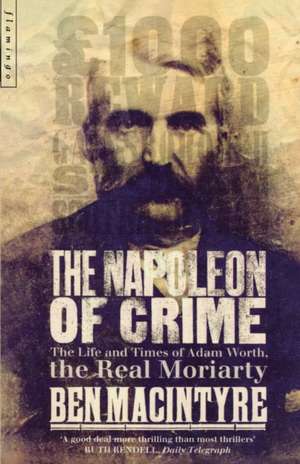Macintyre, B: Napoleon of Crime
en Limba Engleză Paperback – 14 iun 1998
Preț: 50.83 lei
Preț vechi: 82.24 lei
-26% Nou
Puncte Express: 76
Preț estimativ în valută:
9.73€ • 10.05$ • 8.09£
9.73€ • 10.05$ • 8.09£
Carte indisponibilă temporar
Doresc să fiu notificat când acest titlu va fi disponibil:
Se trimite...
Preluare comenzi: 021 569.72.76
Specificații
ISBN-13: 9780006550624
ISBN-10: 0006550622
Pagini: 320
Ilustrații: black & white illustrations
Dimensiuni: 131 x 205 x 28 mm
Greutate: 0.26 kg
Editura: HarperCollins Publishers
Locul publicării:United Kingdom
ISBN-10: 0006550622
Pagini: 320
Ilustrații: black & white illustrations
Dimensiuni: 131 x 205 x 28 mm
Greutate: 0.26 kg
Editura: HarperCollins Publishers
Locul publicării:United Kingdom
Notă biografică
Ben Macintyre
